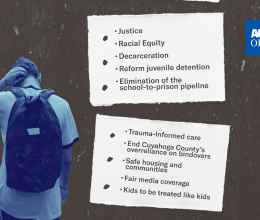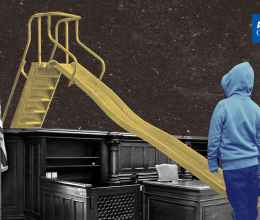Imagine spending 22 – 24 hours a day in a room the size of a parking space. TVs, radios, and reading materials may or may not be available. Visits from family are strictly limited, if permitted at all. Almost all human contact occurs while in restraints or through a barrier.
This is life in solitary confinement.
It’s life for approximately 80,000 adults and 70,000 children across the country held in solitary every day.
Individuals placed in solitary confinement exhibit a variety of negative psychological reactions, including severe and chronic depression; paranoia; delusions; and irrational rage. Self-mutilation is a common practice, and suicide rates are higher.
Learn more, by reading our Civil Liberties Briefing: Locked Up, Locked Out: Solitary Confinement in Ohio.
Solitary confinement is a costly concept in many ways. The human costs of solitary confinement are extremely high for those who experience it. There are monetary costs for society as well, since building and staffing isolation units are more expensive than traditional prisons. Additionally, recidivism rates are higher for those who’ve spent time in solitary, leading to larger prison populations.
There are better alternatives to using solitary confinement. At minimum, Ohio’s prisons should adopt the American Bar Association’s Standards for Criminal Justice, Treatment of Prisoners, which, among other things, call for appropriate procedures for the use of solitary; limits to time spent in solitary; and ending solitary confinement for those with mental illness.
Check out our new fact sheet to learn more about the impact solitary confinement has on those who experience it, their families, and the larger community.








